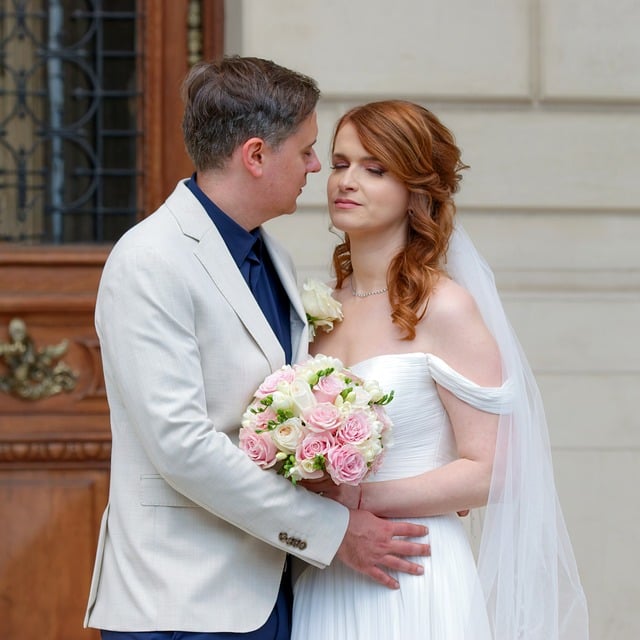Read tips for selecting unique wedding dress styles
Choosing a wedding dress is one of the most exciting and personal decisions in wedding planning. Your gown should reflect who you are while making you feel confident and beautiful on your special day. With countless styles, fabrics, and design elements available, finding a dress that stands out and feels uniquely yours requires thoughtful consideration. This guide offers practical tips to help you navigate the process of selecting a wedding dress that breaks away from tradition and truly represents your individual taste and vision.

Discover diverse color palettes
While white and ivory remain classic choices, modern brides are increasingly embracing color to make their wedding attire truly distinctive. Soft pastels like blush pink, champagne, and lavender offer a romantic alternative that still feels bridal. For those seeking bolder statements, jewel tones such as emerald green, sapphire blue, or deep burgundy create dramatic and unforgettable looks. Even subtle touches of color through embroidery, sashes, or underlay can transform a traditional gown into something special. Consider your skin tone, wedding theme, and personal preferences when exploring color options. Ombre effects that transition from white to a soft hue at the hem have also gained popularity, offering a unique twist on conventional bridal wear. Remember that your dress color can complement your wedding palette while allowing your personality to shine through.
Explore innovative fabric choices
The fabric you choose dramatically affects both the look and feel of your wedding dress. Beyond traditional satin and tulle, contemporary designers are incorporating unexpected materials that add texture and visual interest. Crepe offers a sleek, modern silhouette with beautiful drape and movement. Organza provides structure and volume while maintaining an ethereal quality. Velvet has made a stunning comeback for fall and winter weddings, offering richness and depth. Lace remains timeless but comes in countless varieties, from delicate Chantilly to bold geometric patterns. Mixed-media gowns combining multiple fabrics create dimensional looks that catch light beautifully. Consider the season and venue when selecting fabric—lightweight materials like chiffon suit outdoor summer ceremonies, while heavier fabrics provide warmth and elegance for cooler months. The texture of your dress contributes significantly to its overall uniqueness and should align with your comfort needs throughout the celebration.
Uncover unique design inspirations
Drawing inspiration from various sources helps you identify design elements that resonate with your personal aesthetic. Vintage eras offer distinct silhouettes—the romantic sleeves of the 1980s, the sleek lines of the 1920s, or the full skirts of the 1950s can all be reinterpreted for modern brides. Cultural heritage provides rich design traditions, from intricate embroidery patterns to specific construction techniques that honor your background. Nature-inspired details like floral appliqués, leaf motifs, or organic shapes bring an ethereal quality to gowns. Architectural elements such as geometric cutouts, structural boning, or asymmetrical lines create contemporary edge. Art movements including Art Deco beading or bohemian flowing designs offer distinctive visual languages. Fashion runways showcase innovative techniques that can be adapted for bridal wear. Create a mood board with images that speak to you, identifying common threads in color, silhouette, or detail work. This visual collection becomes a valuable communication tool when working with designers or consultants to bring your vision to life.
Embrace your personal style
Your wedding dress should feel like an elevated version of yourself rather than a costume. Consider your everyday fashion preferences and how they might translate into bridal wear. If you typically wear minimalist clothing, a clean-lined gown with subtle details might feel most authentic. Those who love romantic, feminine pieces may gravitate toward soft fabrics, delicate lace, and flowing silhouettes. Fashion-forward dressers often prefer avant-garde designs with unexpected elements like capes, jumpsuits, or unconventional necklines. Think about what makes you feel confident in daily life—whether that is showing shoulders, having pockets, or wearing pants—and seek wedding attire that incorporates these preferences. Your comfort level with different levels of formality, embellishment, and attention should guide your choices. Remember that you will be wearing this garment for many hours, so it must feel natural to move, sit, and celebrate in. Authenticity creates the most memorable and beautiful bridal looks because confidence shines through when you feel genuinely yourself.
Find the perfect match for your theme
Your wedding dress should harmonize with your overall celebration aesthetic while maintaining its own identity. Beach weddings call for lightweight fabrics, relaxed silhouettes, and details that withstand wind and sand. Garden ceremonies pair beautifully with floral appliqués, soft colors, and flowing materials that complement natural surroundings. Formal ballroom receptions provide the perfect backdrop for dramatic trains, intricate beading, and structured gowns. Rustic barn venues suit bohemian styles with lace, vintage touches, and comfortable silhouettes. Modern industrial spaces highlight sleek lines, minimalist designs, and architectural elements. Consider practical aspects like terrain—a full ball gown may be challenging on grass or uneven surfaces. Your venue’s architecture and color scheme should inform but not dictate your dress choice. The goal is creating cohesion between your attire and setting without sacrificing your personal vision. Your dress can incorporate subtle nods to your theme through color accents, fabric choices, or accessory selections while remaining distinctly your own statement piece.
Conclusion
Selecting a unique wedding dress involves balancing personal expression with practical considerations. By exploring diverse color palettes beyond traditional white, investigating innovative fabric options, drawing inspiration from multiple sources, staying true to your everyday style, and considering your wedding theme, you create opportunities to find or design a gown that feels authentically yours. The process requires time, research, and often trying on styles you might not initially consider. Trust your instincts, remain open to possibilities, and remember that the most beautiful wedding dress is one that makes you feel confident and comfortable. Your wedding day attire should tell your story and reflect the unique individual you are, creating memories and photographs you will cherish for years to come.


